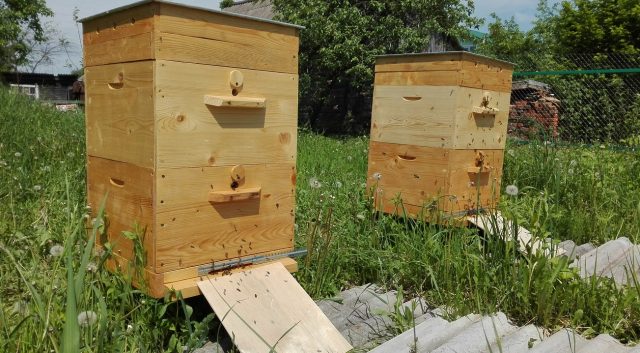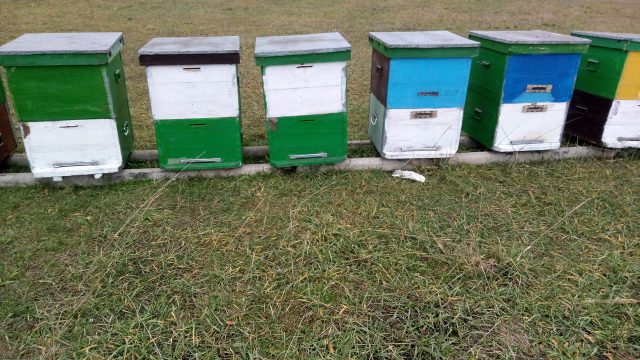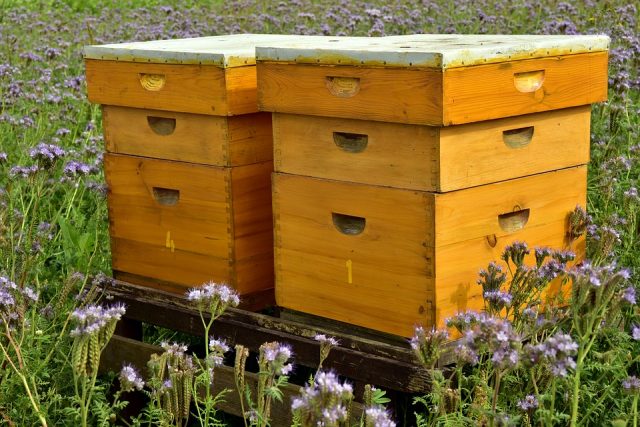Content
Stealing from bees is a problem that almost any beekeeper had to face. It seems to many that beekeeping is quite a profitable business, in fact, it is also a responsible job, since bees can be exposed to various diseases and attacks. If thief bees have been found, it is worth immediately taking measures to eliminate them, otherwise you can lose the bee family.
Reasons for theft in the apiary
Theft in an apiary among bees is a peculiar method of extracting honey. In such situations, the hive can lose its queen or completely die in the struggle. Thief bees prefer to take honey by force, rather than extract it on their own. Since a large number of bees die during the struggle, there is a chance of losing the entire apiary.
Why do bees attack
There are a number of reasons why bees attack the hive:
- Most families steal according to tradition, as a result of which they earn their food only in this way. It seems impractical for such individuals to collect pollen every day and process it into honey, it is much easier to attack another hive and take what they want.
- Most often, theft among bees is common during a drought, when the amount of pollen is insufficient to support the family. Some beekeepers justify this kind of theft, as bees are trying to survive in every possible way.
- Often the thefts are provoked by the beekeepers themselves, collecting the wrong hives, in which there are cracks that attract other insects.
Sometimes theft becomes spontaneous, and even those families who have never done it before resort to it.
Where do thief bees come from?
Thief bees often appear in early spring or fall. At a time when the weather is warm and calm outside, but, unfortunately, the honey plants have already faded or there is still no bribe. In some regions, the weather can be cool and as a result the plants secrete a small amount of nectar.
It is in this situation that the bees begin to look for additional sources of food. One such method is to attack a weak family. Unfortunately, the main reason for the appearance of thieves is the beekeeper himself, who performs some actions with the hives incorrectly, thereby attracting strangers.
How to spot thief bees
It is important to take into account that the thief will never enter the hive from the main passage, she will look for the available cracks and small gaps. You can easily identify such an individual:
- the thief buzzes quite loudly;
- flies in zigzags;
- does not fly into the hive, but actively searches for cracks.
It is necessary to fight bees with thieves as soon as they are found. The thief behaves as follows:
- when leaving the hive, it flies as close to the ground as possible so that other individuals cannot notice it;
- there is honey on the thief's abdomen, if you lightly press on the bee, it will begin to flow out of the sting.
If the theft is not prevented in a timely manner, the honey thieves will kill the queen bee.
Bee attack
It is not difficult to recognize a massive attack by thief bees if you pay attention to the following points:
- at the moment when the bees attack the hive, they emit a loud buzz, as when collecting pollen;
- fly in zigzags, imitating, as if they are carrying a large load;
- thieves try to find cracks in the hive and penetrate through them;
- the bee colony begins to swarm over the hive, trying to repel the attack;
- there are dead bees around the hive, stings can be found on their body;
- near the hive, you can see individuals with wiped stripes on the body, which are characteristic of thieves;
- after an attack, thieves fly as close to the grass as possible;
- the robbed family becomes aggressive.
If you open the hive during the attack, the alien bees will quickly begin to leave the scene of the crime.
How to determine whether it is flying around or an attack
As a rule, theft from bees is observed in the fall or spring. It often happens that many beekeepers confuse theft in an apiary with bees flying around. Distinguishing flying from robbery is not as difficult as it might seem at first glance. As you know, the fly-over takes place on warm August days in the interval from 14-00 to 16-00. It was at this time that young individuals make their first flight, which resembles the behavior of thieves. The difference lies in the fact that during a theft, thief bees fly low above the ground, and young individuals fly around the hive at a height during a flight.
How to prevent bees from stealing
There are many ways to prevent theft in the apiary. In addition to preventive measures, you can use improvised means, for example, salt or diesel fuel. As many experienced beekeepers note, the smell of diesel fuel can scare off aggressive individuals. For these purposes, it is necessary to moisten a small piece of cloth in diesel fuel and process the outer walls of the hives. In just a couple of minutes, the insects begin to calm down, and there will be no attempts to attack even the next day.
How to get rid of thief bees
If the thief bees that appear do not belong to the beekeeper and are outsiders, you can get rid of them quite easily. The algorithm of actions is as follows:
- The entrance is completely isolated and closed.
- A small tube with a diameter of about 10 mm is inserted into the passage.
Further, thieves will begin to penetrate into the hive through this tube, but they will no longer be able to get out of it. At the moment when all strangers are inside the entrance, it will need to be closed and transported to another place. Gradually, the thief bees will begin to settle in a new place and start collecting honey.
How to stop bee attacks on the hive
It is possible to stop theft in an apiary only if they are part of the apiary. This will require:
- Move the hive with thieves to a new location. As a rule, such individuals attack weak families, and if they find themselves in a new place, they will lose the object of attack.
- Lock the thief in the dark for 3 days in the spring and 8 days in the fall. This procedure has a calming effect on the thief bees.
- Deprive of feeding, so that there is no strength for the battle.
An excellent prevention is to damage the hive in which the thieves live - to make a hole. The bees will stop attacking as they will be busy producing wax to close the gap.
Stealing bees
In addition to the spring and fall theft among bees, some beekeepers are faced with theft of families. There are individuals who set traps in the path of insects and abduct captured bees.For these purposes, small plywood boxes are installed on the trees, which are treated with wax on the outside and nectar inside.
Undoubtedly, this way you can attract bees, but it is important to understand that brood left in a native hive can completely die without food. In addition, insects need a queen. If insects are caught too late, then by the end of winter they may not have time to equip a hive, grow brood and provide themselves with the necessary amount of food, as a result of which individuals may die.
How to deal with bee theft
If thefts are noticed at the apiaries, then it is necessary to immediately start fighting the thief bees. Quick actions will help the robbed family recover rather quickly and return to collecting honey. In this situation, it is worth:
- reduce the entrance to the entrance so that no more than 2 individuals can enter it;
- cover the hive with boards in the form of a visor, as a result of which the entrances will be hidden from stranger bees;
- close the entrances with glass - local individuals will orient themselves as quickly as possible, and strangers will be confused;
- in case of serious attacks, it is worth closing all the cracks; it will also help the tube in the notch against bee theft;
- it is worth paying attention to the uterus, which is most likely weakened and cannot protect the family;
- as a rule, the same individuals steal, which already arrive not by smell, but remember the road, in which case it is recommended to move the hives.
If necessary, you can pour clean water over the hive, which will wash away not only traces of honey, but also its smell.
Prevention measures
To prevent theft among bees, it is worth resorting to preventive measures:
- you cannot leave the hives open for a long time;
- all work is best done in the evening, which will prevent the attraction of thieves;
- it is periodically recommended to move the apiary to another place;
- after the work carried out, the used equipment should be thoroughly washed;
- do not often drop in to the bees after the honey plant is completed;
- when working with frames, it is worth covering with a wet cloth those that are not currently being worked with.
By adhering to these recommendations, you can prevent the attack of thieves on the apiary.
Conclusion
Stealing from bees is quite common. It is necessary to start solving this problem as quickly as possible, otherwise it will lead to disastrous consequences. As a rule, during honey collection, theft becomes less pronounced or stops completely.












